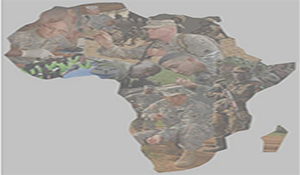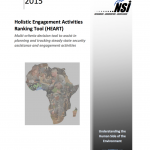Holistic Engagement Activities Ranking Tool (HEART)

Holistic Engagement Activities Ranking Tool (HEART) — A Multi-criteria decision tool to assist in planning and tracking steady state security assistance and engagement activities.
Author | Editor: Astorino-Courtois, A. (NSI, Inc).
More than ever, United States Government (USG) activities are planned and implemented in an atmosphere of shrinking budgets, high expectations and intense scrutiny at home, plus non-conventional enemies and complex operating environments abroad. In the security realm, there is little debate that the demand for cost-effective, high-impact, and transparent use of government resources requires the Department of Defense (DoD), Department of State (DoS), and other government entities that operate oversees to work together or in complementary ways. Still, departments and their components have their own expanding missions, dwindling resources and programs to administer, making achieving unity of effort difficult. At present, there is no readily accessible process or framework that can incorporate and integrate the range of USG security-related activities abroad and that DoD planners and non-DoD practitioners might use to build common operating pictures – either within their own departments or in coordination with other departments working related activities. This deficiency increases the likelihood that what might be cost-saving efficiencies or wasteful redundancies in US security assistance and engagement programs will go unnoticed by planners and decision makers. Recognizing that US Africa Command (AFRICOM) engagement strategists and planners are in particular need of a systematic process for aligning resources and activities to strategies in the most effective and efficient ways possible, the Command J5 requested that the Strategic Multi-Layer Assessment (SMA) team, “develop an evaluative tool to aid in prioritization and metric development for command engagement strategies.”
Aligning resources to strategy has become an imperative for AFRICOM J5, and other command staffs. However, without a framework and standard measurement schema it is difficult, if not impossible to calculate the relative value of different engagement activities, as well as the trade-offs involved in changing priorities and activities. To address this need, NSI developed the Holistic Engagement Activities Ranking Tool (HEART), an evaluative tool, to provide planners with an accessible means of analyzing and optimizing AFRICOM engagement resources to national and Command objectives while retaining the flexibility to monitor and adjust to rapid changes in political-military environments and/or the priorities (e.g., cost, impact, contribution to mission success, risk to personnel) of greatest concern to the Command.

Comments